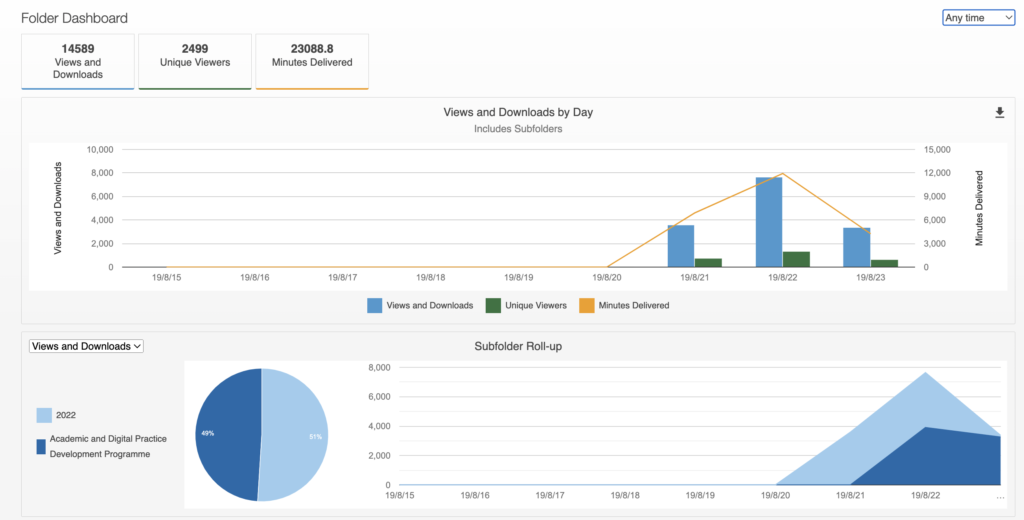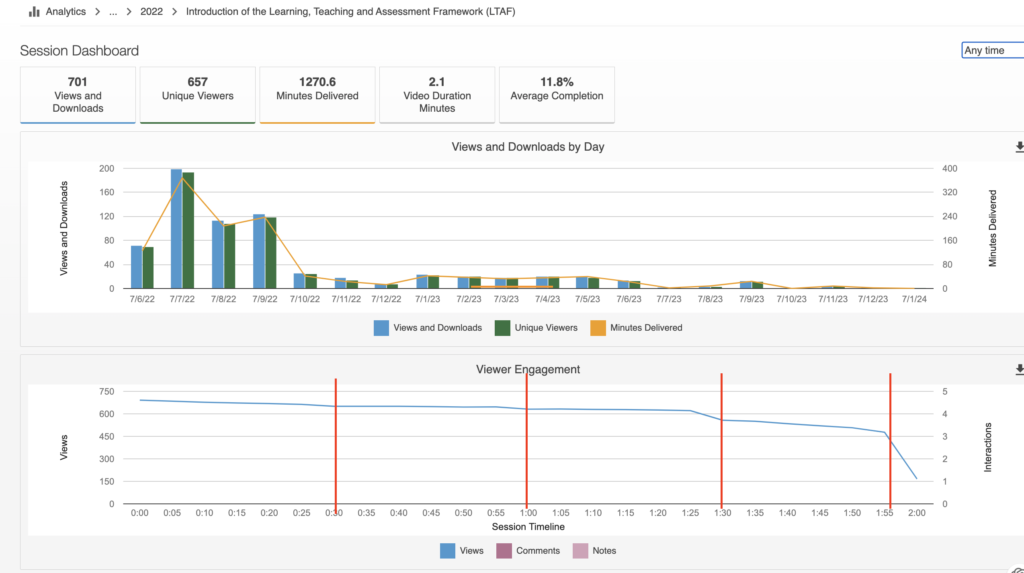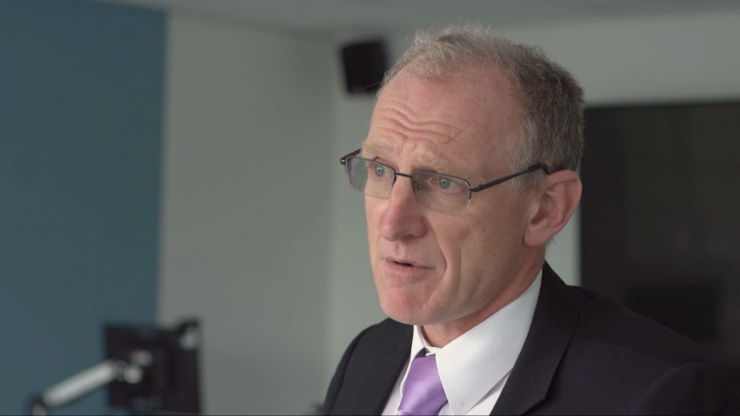by Matthew Gilooly, University of Derby, UK.
In the dynamic landscape of digital education, the journey from insight to implementation holds the key to improving user engagement in video content. This process involves a meticulous analysis of viewer behaviour, identification of attention hurdles, and a commitment to refining video production strategies.
Our experience of staff completing an academic and digital practice course, with 650 ‘students’ completing it, has provided valuable insights into enhancing the effectiveness of video content. The course has been running for several years, across which we have analysed the video content.

Unveiling Insights through Analytics
In 2022, our initial video production approach consisted of interview-based videos with two cameras, minimal edits, and basic background music. However, upon scrutinising the analytics from Panopto’s data, patterns of disengagement became evident. Regular dips in viewer engagement every 30 seconds highlighted what we termed as “attention hurdles.” These hurdles, when unmet, led to a significant drop in audience retention.
**Decoding the Attention Hurdles**
Understanding the reasons behind these attention hurdles required a blend of data analysis and informed speculation. While some reasons remain speculative, direct feedback from a sample group of 500 staff members would be invaluable in pinpointing specific issues at those critical checkpoints, however, getting that information is unrealistic and they probably wouldn’t remember why they turned off the video.

Iterative Improvements: Experimentation and Adaptation
Armed with insights, we embarked on a journey of experimentation to address these attention hurdles. Our video formats underwent significant changes, from metaphorical scenarios to Voiceover-only content with cutaways. Even in traditional talking head videos, we introduced handheld second camera angles and increased cutaways for a more dynamic visual experience.
Watch the navigating blackboard video here
However, challenges persisted. Some cutaways were not visually stimulating, and certain edits felt either prolonged or rushed. Striking a balance between engagement and information delivery remained an ongoing challenge.

Surprisingly, a video with minimal edits but passionate interviewees proved to be engaging, highlighting the importance of presenter enthusiasm. This revelation emphasised that the quality of presentation within a video is as crucial as its visual elements.
Refining Strategies: Shorter, Varied, and Engaging Content
In response to the identified dropout rates, we strategically reduced video lengths to under two minutes. This adjustment led to a notable improvement in viewing statistics. Recognising the need for variety, we incorporated a range of content types within each module, avoiding a monotonous presentation style.
A Structured Approach: Design, Create, Deploy, Review, Repeat
This journey of adaptation has led us to establish a systematic process for video content creation. It involves designing content, creating it, deploying it to users, reviewing analytics, making necessary changes, and then returning to the design phase. This iterative cycle ensures continuous improvement and relevance.

Key Takeaways: Embrace Change and Diversify Content Formats
Ultimately, our experience highlights the importance of experimentation and adaptation in video production. Consistency in content delivery does not necessarily equate to success; instead, diversifying content formats and maintaining audience engagement through varied approaches prove to be key.
In conclusion, the evolution from insight to implementation involves an ongoing commitment to analysing, experimenting, and refining video content strategies. By understanding audience behaviour and adapting our approach, we can create video content that not only meets educational objectives but also captivates and retains the attention of our viewers.

Author
Matthew Gilooly, Learning Technology Media Adviser at University of Derby, UK





















